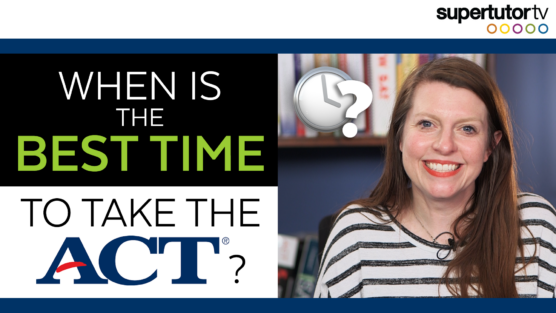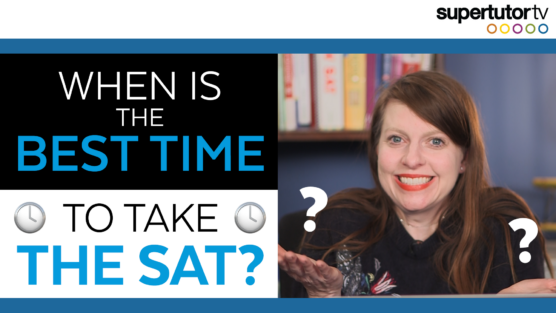NOTE: THERE IS A NEWER VERSION OF THIS BLOG HERE:
https://supertutortv.com/college/best-bets-for-test-optional-2023/ (opens in a new tab)
Are you applying to college to start in Fall 2023 and wondering how to play the Test Optional game to the maximum? If so, in this blog, we’ll go through the data we have from the first ever test optional cycle at colleges and universities in the United States. Using that, we’ll create a nuanced story about what schools are going to be best bets for you if you don’t want to submit a test score and what schools are going to value a test score in this test-optional environment.
As you start to sort through your college list, we encourage you to look through the data in this blog to really get into each school and build your strategy for where you’re applying and why you might want to submit a score or not.
Test-Blind and Test-Required Schools
If a school is test-blind, you don’t submit a score at all as it won’t be considered in any case. If a school is test-required, you have to submit a score as part of your application.
Around 8% of the top 200 nationally ranked US universities are currently test blind.
Among competitive colleges, CalTech (California Institute of Technology) is likely the most competitive university right now offering test-blind admissions. CalTech’s policy is a little ironic considering that MIT—which is probably CalTech’s biggest competitor—is requiring the SAT or the ACT. According to CalTech’s data– it “doesn’t matter,” but they’re waiting to have more information to see if test optional students persist and how they perform in upper level classes.
Although not all of Cornell University is test-blind (some of it is test-optional), it has certain schools that are fully test-blind: the College of Agriculture & Life Sciences; the College of Architecture, Art, and Planning; the Cornell SC Johnson College of Business-Dyson School of Applied Economics and Management; and the Cornell SC Johnson College of Business-Peter and Stephanie Nolan School of Hotel Administration. If you apply within Cornell to these particular schools, you will not need a test score. Other colleges at Cornell are test-optional.
The University of California system (UC Berkeley, UCLA, UC San Diego, UC Irvine, UC Santa Barbara, and others) is also indefinitely test-blind. There are also a few small test-blind colleges that might be of note and are on the more competitive side: Pitzer, Reed College, and Dickinson College.
Around 7% of competitive (top 200 ranked) US national universities currently require the SAT or ACT for admission.
At the top of the list is MIT. Georgetown, Georgia Tech, University of Florida (and all public Florida schools), Purdue, University of Georgia, and Gallaudet also require a score (though some may have waiver policies if extenuating circumstances exist). If you apply to one of these colleges, you need to have a test score.
The zeitgeist of the moment is test-optional: 85% of top ranked colleges consider the SAT and ACT but don’t require it.
The Data We Have on “Test Optional”
During 2020, the top 200 colleges overwhelmingly embraced test optional admissions to adapt to the COVID 19 crisis. While pre-pandemic, less than 10% of these schools were test optional, by fall of 2020, around 90% had adopted test optional or blind policies. We now have the data on this first “COVID impacted” admissions cycle for admission in fall of 2021. Granted, these students were heavily impacted by test cancellations, and a lot of them could not get a hold of an SAT or ACT even if they wanted to. Thus although this is test optional data– it may be more forgiving of those without tests in ways that future cycles will not be. The data is perhaps most useful when viewed relatively: we’re looking at how colleges responded to the circumstances relative to how other colleges responded, and using that as an indicator of where they might be a little bit more generous if you don’t have a test score. There are so many confounding factors that we can’t be 100% sure, and this is all guess-timation and estimation at a certain point. But when you like ten colleges but you know you only want to fill out applications for three of them, this could potentially help you make some of those decisions.
All of the data we have is based on the percentages of students who enrolled at these colleges and universities, not the percentages of students who were accepted. Still, it’s likely a good indicator of whether you’re the kind of student that will end up going to that school.
BLOG UPDATE: it’s come to our attention that two schools have made an error in filling out the Common Data Set, which we pull data from for this video and blog. A&M and Notre Dame mistakenly reported the percent of students who took the ACT vs SAT out of the total of only those who had reported scores for the data point we were using as opposed to the percent of all enrolled students who reported scores (as was indicated by the CDS), making it look in our earlier draft of this blog as if both had 100% (or near that) of students attending submitting scores. We have since adjusted the numbers for accuracy and consistency despite the reporting error from these institutions. As a result, Notre Dame no longer tops our list as the “worst bet” for test optional. A&M is still high on our worst bets list.
“Top 20″ Ranked Best Bets for Test-Optional
If you want to go to an extremely competitive college—among the top 20 or so in the country– but you’ve already exhausted the test-blind list and want to apply to a few other schools—and you’re wondering where you have a shot without a test score, these are probably some of your best bets.
Number one on the list is UChicago, which was test-optional even before the pandemic hit. There is no data for UChicago since it doesn’t release a common data set, but we would still call it a best bet because they have been open to the idea of test-optional since before the pandemic. If you’re in range at UChicago, though, we would still encourage you to send your scores.
Next on the list is Vanderbilt. Vanderbilt has really high test scores in terms of its 25th to 75th percentile; those that submit a high test score will have a better chance of admission, so if you have a great score, we recommend that you apply there because scores can still really help you. But statistically, if we take the percent of students that submitted SAT scores and/or ACT scores who are in that class now, it’s particularly low compared to the competition. So it’s still on our list if you’re looking to go test-optional.
Also on our list are Amherst, Cornell (all other colleges that aren’t test-blind), Harvey Mudd, Swarthmore, Emory, Williams, and Carnegie Mellon. But a piece of context for Emory: it is on our list of better bets for competitive test-optional colleges, but that doesn’t mean that you don’t have an advantage if you have a test score. For example, 17% of students that submitted test scores who applied to Emory during this admission year were admitted, versus only 8.6% of students that did not submit test scores. Even though Emory, compared to its peers, enrolled more people who did not have a SAT or ACT score, their admission rate was almost double for people who had a score. The list does not tell the whole story: true, these are “best bets” for those who want to omit scores. Within these statistics, however, you are still disadvantaged if you aren’t submitting a test score whenever you can. Great scores will almost always help you.
Top 20 Worst Bets for Test-Optional
Princeton, Yale, Harvard, and Stanford top our list. If you’re looking at these four and are only going to apply to one as a lottery ticket, Stanford is probably your best bet. But at all of these top schools, scores matter.
Northwestern, Brown, UPenn, and Rice are all still very competitive schools, and we’re seeing that the majority of students applying to these are submitting their test scores. Chances are that you should probably be submitting a test score if you can at these institutions.
Wild Cards
We don’t have data on all the top schools. For example, we don’t have common data sets on Dartmouth and Duke for this test-optional year. These colleges typically do fill out the common data set, but it’s not released yet. Washington University in St. Louis, Johns Hopkins, and Columbia notoriously do not release common data sets, though Columbia has recently announced that it is going to do so this fall.
NYU also did not have data, but in our experience, NYU loves a great test score. NYU is one of the few competitive schools that deemphasize activities, letters of recommendation, and essays. In other words, if you want to get into NYU, a test score is sometimes a great golden ticket to get in and might even weigh in more at NYU than some of the other factors.
Top 20-50 Ranked Best Bets for Test-Optional
In the next tier, our best bets without a score include Southern Methodist University, Northeastern, Villanova, Boston University, Tulane, Tufts, Wake Forest, Wisconsin, and Pepperdine. But take note: if you’re applying to Tulane, you have to apply early action or early decision. Over 90% of students last year who got into Tulane applied early in one way or another, so if you’re not applying early, you’re unlikely to get in.
Top 20-50 Ranked Worst Bets for Test-Optional
In terms of schools that we recommend that you do submit a score and those where the score really matters, these tend to be well-regarded state schools: University of Michigan, Ohio State, UT Austin, UVA, College of William & Mary, University of Southern California, and University of North Carolina at Chapel Hill. All of these schools are going to value your SAT or ACT more, compared to those that are in the same ranking bracket.
Percent of Enrolled Students Submitting Either ACT or SAT Scores (Fall 2021)
| University | Percent Submitting SAT Scores Enrolled Fall 2021 | Percent Submitting ACT Scores Enrolled Fall 2021 | Combined Percent Submitting ACT and/or SAT Scores Enrolled Fall 2021 |
|---|---|---|---|
| Pepperdine University | 19% | 3% | 22% |
| University of Washington | 19% | 8% | 27% |
| University of Arizona | 12% | 18% | 30% |
| University of Oregon | 17% | 16% | 33% |
| Temple University | 30% | 5% | 35% |
| Southern Methodist University | 16% | 23% | 39% |
| Northeastern University | 28% | 14% | 42% |
| Boston University | 32% | 13% | 45% |
| Penn State University | 37% | 8% | 45% |
| Villanova University | 28% | 17% | 45% |
| Drexel University | 37% | 9% | 46% |
| University of Colorado, Boulder | 32% | 16% | 48% |
| Marquette University | 13% | 37% | 50% |
| Tufts University | 31% | 23% | 54% |
| Lehigh University | 36% | 18% | 54% |
| Wake Forest University | 23% | 32% | 55% |
| University of Miami | 31% | 24% | 55% |
| Tulane University | 15% | 41% | 56% |
| North Carolina State University | 21% | 35% | 56% |
| Vanderbilt University | 25% | 32% | 57% |
| Swarthmore College | 39% | 21% | 60% |
| Wellesley College | 37% | 23% | 60% |
| Harvey Mudd College | 40% | 20% | 60% |
| Cornell University | 41% | 20% | 61% |
| University of Wisconsin-Madison | 15% | 46% | 61% |
| Indiana University | 39% | 22.8% | 61.8% |
| Emory University | 37% | 27% | 64% |
| Michigan State University | 48% | 16% | 64% |
| Amherst College | 35% | 31% | 66% |
| Washington University in St. Louis | 25% | 41% | 66% |
| Case Western Reserve University | 39% | 27% | 66% |
| University of Illinois at Urbana-Champaign | 43% | 24% | 67% |
| University of Georgia | 36% | 31% | 67% |
| Carnegie Mellon University | 47.7% | 21.9% | 69.6% |
| College of WIlliam and Mary | 51% | 19% | 70% |
| University of Notre Dame | 33% | 36% | 70% |
| Williams College | 43% | 28% | 71% |
| University of Delaware | 60% | 11% | 71% |
| University of Virginia | 51% | 21% | 72% |
| Columbia University | 44% | 29% | 73% |
| University of Southern California | 47% | 26% | 73% |
| Rice University | 46% | 29% | 75% |
| University of North Carolina at Chapel Hill | 15% | 60% | 75% |
| University of Pennsylvania | 49% | 30% | 79% |
| Stanford | 48% | 31% | 79% |
| Brown University | 51% | 30% | 81% |
| Northwestern University | 43% | 39% | 82% |
| University of Texas at Austin | 56% | 26% | 82% |
| University of Iowa | 18% | 65% | 83% |
| Ohio State University | 21% | 64% | 85% |
| Harvard University | 54% | 31% | 85% |
| University of Michigan | 54% | 32% | 86% |
| Texas A&M | 60% | 28% | 88% |
| Yale University | 54% | 35% | 89% |
| Georgia Tech University | 53% | 36% | 89% |
| Princeton University | 56% | 35% | 91% |
| Purdue University | 62% | 31% | 93% |
| Georgetown | 64% | 38% | 102% |
| Massachusetts Institute of Technology | 70% | 34% | 104% |
| Dartmouth College | no data | no data | no data |
| Duke University | no data | no data | no data |
| New York University | no data | no data | no data |
*Note that these numbers may not be the most accurate representation due to the COVID-19 pandemic that affected testing sites and students’ ability to take the tests.




